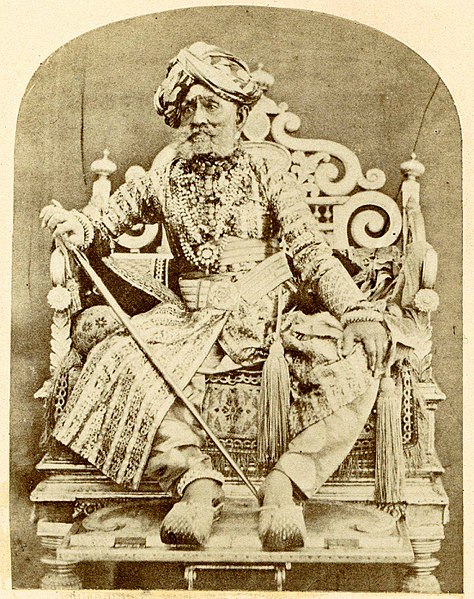The Sritattvanidhi is a treatise written in the 19th century in Karnataka on the iconography and iconometry of divine figures in South India. One of its sections includes instructions for, and illustrations of, 122 hatha yoga postures.
Opening page of the Kannada treatise Sritattvanidhi (19th century)
The Shiva nidhi section includes the Thirty-two forms of Ganesha; Mahaganapati pictured
A yogini in Aṇkuśāsana, the Elephant goad pose (Bhairavasana)
Gajasana, Elephant pose, a forerunner of Downward Dog (Adho Mukha Shvanasana)
Krishnaraja Wodeyar III was an Indian king who was the twenty-second Maharaja of Mysore. He ruled the kingdom for nearly seventy years, from 30 June 1799 to 27 March 1868, for a good portion of the latter period of which he was merely a nominal ruler. He is known for his contribution and patronage to different arts and music during his reign. He was succeeded by his biological grandson and adopted son, Chamarajendra Wadiyar X.
Photograph of Maharaja Krishnaraja Wodeyar III, circa 1866
Krishnaraja Wodeyar III as a child
"Queens" of Mysore: left, Krishnaraja Wodeyar III's first wife, Devajammani, right, his second wife, also named Devajammani. Thomas Hickey, 1805. The two queens in the painting are thought to advertize vaccination over variolation, as they display the respective traces on their skin.







